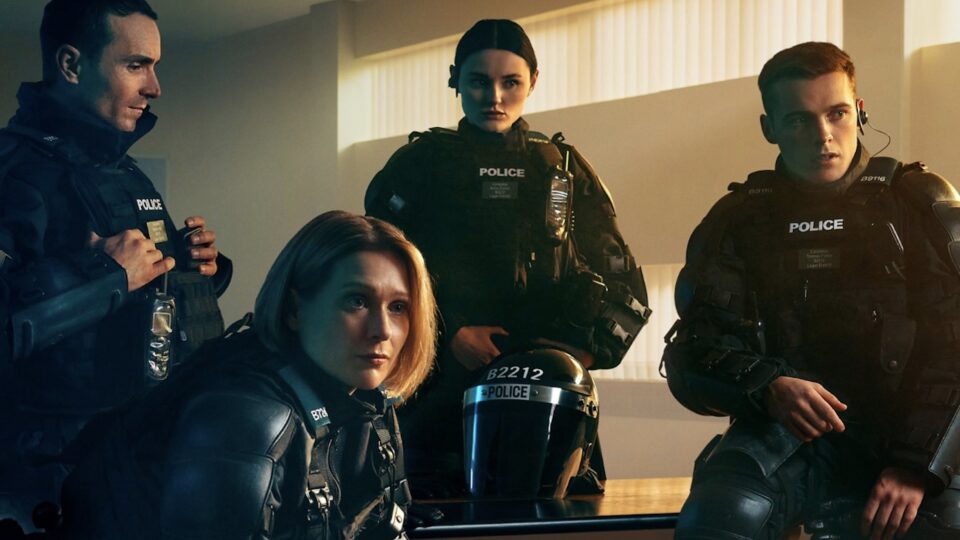Deluxe 142 worked on the visual and audio post and created the titles for the BBC’s three-part adaptation of James Herbert’s best selling 2006 novel The Secret of Crickley Hall, which will be broadcast this Halloween.
Produced by BBC Drama Production North, it is directed by Joe Ahearne (Dr Who) and stars Suranne Jones and Tom Ellis as Eve and Gabe Caleigh, a young couple who decide to move into Crickley Hall, a former orphanage in a Devonshire ravine named Devil’s Cleave, following the disappearance of their own child.
The Deluxe 142 team included Paul Staples (colourist), Simon Brook (online editor), Nick Timms (online editor and title design), Chris Roberts (dialogue editor), Richard Fordham (sound effects editor) and David Old (sound mixer). Harriet Dale, head of Production at 142, supervised the project
.
The online for The Secret of Crickley Hall was completed in an Avid DS Nitris suites. Director Joe Ahearne wanted a significant amount of picture re-sizing and camera zoom modifications to improve the tension or dynamic of a scene and online editor Simon Brook was asked to recreate a ‘mesmeriser’ look which is normally achieved using a modified camera lens.
In addition to the removal of modern artefacts for the period scenes, other VFX challenges included making sure ‘dead’ people did not appear to breath or twitch, whilst hand held shots were stabilized and rain added to storm scenes.
For the title sequence, Ahearne and colourist Paul Staples came up with two looks for the panning shot used. In order to integrate the credits into the foreground and use both of the looks supplied, online editor Nick Timms tracked the credits to trees and branches in the foreground, then moved them forward in Z-space to give a sense of independence. He used a slightly gothic font which was given a glow for all the credits and main title. The main body of the work (tracking and credit placement) was done in After Effects, with the final compositing completed in the Avid DS Nitris.
Sound effects editor Richard Fordham was provided with a clear brief from Ahearne. Crickley Hall itself was to have neutral, almost lifeless background atmosphere, this allowed nothing to distract from the narrative as it was revealed, yet left space for the more subtle and disconcerting sound effects. It also provided scope for the bigger sound scares to be all the more shocking.
As The Secret of Crickley Hall is told in a dual timeframe, there was also the opportunity to use sound to support how these eras were presented in the frame. The sound effects and backgrounds for the contemporary scenes were quite straightforward to establish, but the scenes set during the Second World War were emphasised by elements such as a Spitfire passing over head, or a distant motor engine of the period.
For the portrayal of a London Street the morning after it has been bombed in the Blitz, dialogue editor Chris Roberts recorded additional voices and off-screen activity, such as firemen and ARP wardens searching for survivors in a bomb damaged house, a doctor and ambulance men carrying the wounded and the reactions of people.
The orchestral score was balanced by dubbing mixer David Old with all the other elements to create a soundtrack that draws the audience into the tale of loss at the heart of the story, but delivers plenty of chills and excitement.
Pippa Considine
Share this story

















